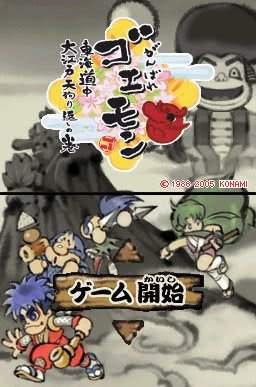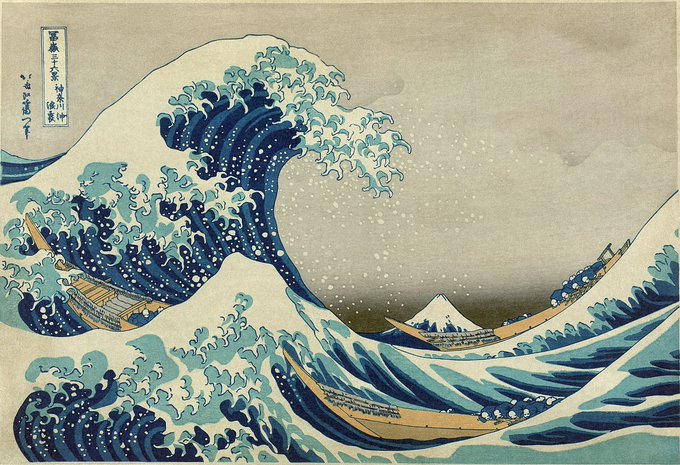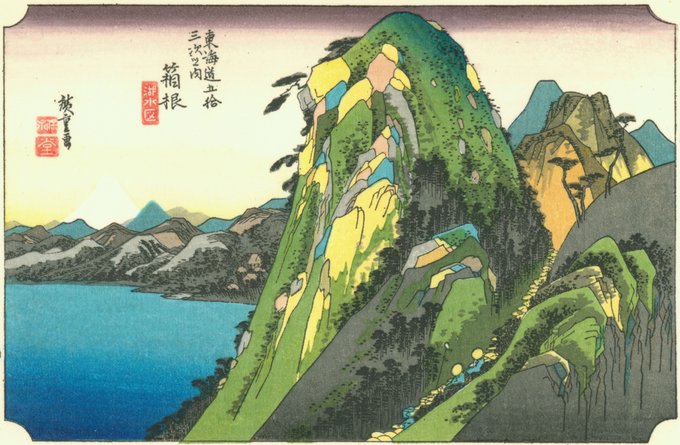todayinGoemonhistoryのTwitterイラスト検索結果。 17 件
Karakuri Dōchū was also ported in the day for the MSX 2, with arguably more polished graphics and sound, a different character for the 2P spot—albeit with a few other features missing.
#todayinGoemonhistory
The game is very fondly remembered, and perhaps no other Goemon game had as big an impact. It regularly appears on “Best Famicom games” lists, and was even re-released for the GBA as part of the Famicom Mini series.
#todayinGoemonhistory
In many ways, the first Ganbare Goemon game was a capsule of the Famicom world at the time: it grabbed elements and mechanics from Mario, Zelda, RPGs, arcade-style games, etc. and synthesized them into a somewhat unique formula of its own.
#todayinGoemonhistory
The overseas release of the game, Legend of the Mystical Ninja, is infamous for its localization and a few other non-Japanese items, but was part of a wave that ignited interest in import gaming and Japanese culture in the early- to mid-90s.
#todayinGoemonhistory
#todayinGoemonhistory Ganbare Goemon ~Yukihime Kyūshutu Emaki~, the first game in the Ganbare Goemon series for the Super Famicom, was released today, on July 19, 1991. It was released outside Japan as The Legend of the Mystical Ninja.
It is a really pleasant, laid-back, inventive game with a beautiful visual design, so I was surprised to find when I started this project that it is somewhat controversial among Goemon fans—manly for annoying plot points and tacky, occasional bitter jokes.
#todayinGoemonhistory
Under Yamauchi’s direction, the game became essentially an adaptation of Hiroshige Utagawa’s “Fifty-three Stations of the Tokaido Line.” Goemon and co had an adventure along the popular route from Edo to Kyoto overplayed on DS-fied ukiyo-e.
#todayinGoemonhistory
Konami had set up a new dev office in Tokyo in 1989 with Kazumi Kitaue as the head (producing eg Castlevania IV, Contra III) later turning to the Mega Drive and PC Engine. Eventually, they found success with PCE Tokimeki Memorial, moving to PlayStation next.
#todayinGoemonhistory
New Age feels very much like a GBA game from the era, with the odd mix of pixel and pre-rendered graphics, rotation effects, and disappointing audio. Overall, there’s something cheap about the game, although I prefer New Age’s updated designs to Shinsedai’s.
#todayinGoemonhistory
After Shinsedai’s disappointing sales, maybe Konami was hoping that the game would gain a bigger audience on the booming GBA, but it seems New Age did even worse. Only very few original Konami IP could compete with their licensed games on the platform.
#todayinGoemonhistory
New Age Shutsudo! (The New Age Moves Out!) is a remixed title of Shinsedai Shumei (The Next Generation Takes Over!), which is a good summary: a (rare) portable port of a PSX game, with the necessary changes necessary to fit the game into a GBA cartridge.
#todayinGoemonhistory
Tengu-to is difficult to write about because game-wise and history-wise, it’s so slight. It was the 3rd Goemon game in the 1998-1999 wave, released after Dero Dero Dochu (Goemon’s Great Adventure) for the N64 and Kuru Nara Koi! for the PlayStation.
#todayinGoemonhistory
Gaiden was a passion project for Aoyama, as he had always hoped to make a Dragon Quest-style RPG ever since he, Hashimoto, and Umezaki, bought the game and played it during the production of the first Ganbare Goemon game.
#todayinGoemonhistory
Kazuhiro Aoyama, one of the 3 key members on the original, was given the task to make a new Goemon game. His team set themselves the challenge of developing something new for the sequel, and decided two-player simultaneous play would be the key feature.
#todayinGoemonhistory
Gaiden 1 didn’t need a sequel, but maybe Konami wanted a game to keep up the momentum built up by SFC Yuki-Hime (Mystical Ninja). Gaiden 2, written/directed by Gaiden 1 scenarist Keita Kawaminami, used the same assets to deliver a more polished experience.
#todayinGoemonhistory
For the PlayStation game, the task was given to KCEN, a new Konami development studio in Nagoya, which was making an disappointing run of disappointing games with Saturn ports and mediocre-to-terrible Game Boy games, inc. the oft-derided Kurofune-to no Nazo.
#todayinGoemonhistory
Kira Kira is an explosion of Goemon stuff and concepts, and everything seems to be on the verge of getting out of control. (Which included development, apparently.) It’s a high point of the characteristic Goemon chaos with really polished artwork.
#todayinGoemonhistory































































